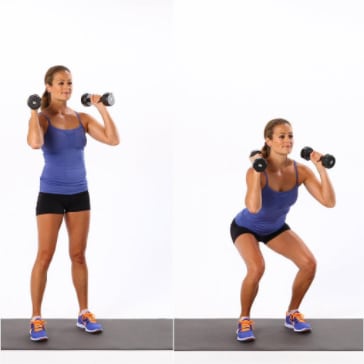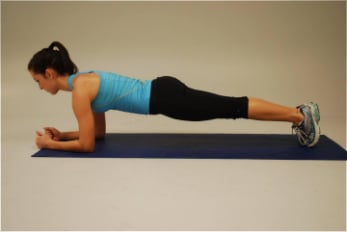Strengthening exercises are specific exercise movements that aim to improve the strength of specific muscles by working them against resistance. They are often used in a rehabilitation setting, especially when you are experiencing muscle dysfunction that is causing pain. Muscle strength is essential for joint control and stability. The tasks that you require strengthening for pre-determines the specific strengthening exercises that will help you to achieve your goals e.g. an athlete who plays tennis will perform exercises that will specifically help improve their sports performance. Strengthening exercises can be prescribed for any muscle(s) in the body. Your therapist may use resistance in the form of workout machines, free weights or barbells, elastic bands, water (e.g. pool), stairs, or even your body weight.
Strengthening Exercises

What is it?

There are 2 types of strength based exercises:
- Isometric:
where the joint angle and muscle length do not change during the exercise. You can perform isometric exercises while in a stationary position with no movement.

- Isotonic:
Involves the controlled movement of muscles and joints. The muscle shortens and contracts against a load/resistance, for example when lifting a weight.

How does it help?
The resistance that the body must work against when performing this type of exercise is what helps strengthen the muscles. When you use resistance, it causes tiny tears in the muscle tissue. The body then repairs and regenerates that muscle so that it is bigger and stronger. This allows the muscle to handle more challenging movements and prepares the muscles for different kinds of activities that you may encounter in any given day.
What do you mean by resistance?
Resistance can be incorporated into your rehabilitation using different tools. For example:
- Weight machines:
Machines help you perform the movement with a safe form as they have a fixed range of movement. - Weight machines:
Free weights: Includes dumbbells, kettlebells, barbells. They allow you to perform many exercises that enable you to target specific muscles. They also provide a greater range of motion than fixed machines do.
Benefits of strength training
Strength training has many benefits for your physical and mental health.
- Strengthening hip and leg muscles can help you safely lift objects from the floor using your leg muscles rather than those in your back.
- Strengthening exercises lower blood pressure and help cholesterol levels, and help make your bones stronger. There is also evidence to suggest strengthening exercises reduce your risk of developing heart disease and arthritis.
- Stronger muscles in your lower back and abdominals help stabilise the spine, allow proper spinal movement, and help with posture.
How Do I Start Strengthening Exercises?
Your physiotherapist will start strengthening exercises with light resistance at first. As your strength increases, more weight/resistance will be added to ensure you are continuing to challenge your muscles to achieve the desired effect. Don’t also forget to give your body time to rest!
How Quickly Do Resistance Exercises Work?
It takes about 2-3 weeks for your muscles to get used to resistance exercise. Always allow about 48 hours rest time between exercises to ensure the body has enough time to rest. It is usually recommended you perform strengthen exercises 3-4 times a week. If you perform the exercises excessively, you may find yourself feeling exhausted and sore, and it may even delay your recovery. It may take you up to 5 weeks to start seeing good results with your exercise program, but the best part is that these will become long-term improvements if you follow the advice of your therapist.
Does it hurt?
Delayed onset muscle soreness (DOMS) is exercise related muscle pain. It is an ‘ache pain’ and stiffness felt in the muscles the day following exercise – and can last for 2-3 days – especially after unaccustomed or strenuous exercise. It usually develops with eccentric (lengthening) exercise, which causes microtrauma to the muscle fibres. Remember, DOMS is not a bad sign and it is completely normal!